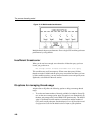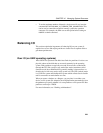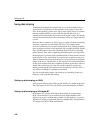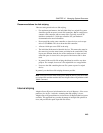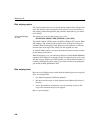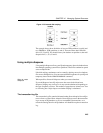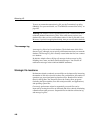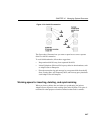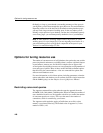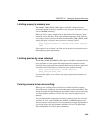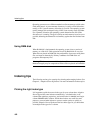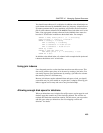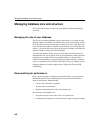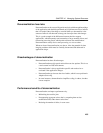
Options for tuning resource use
448
Ordinarily, as long as you maintain a reasonable percentage of free space in
your IQ Store, you will have enough free space. However, for certain deletions,
depending on the size of the data and its distribution among database pages,
you may need a large amount of working space. In the case where you are
deleting a major portion of your database, and the data is distributed sparsely
across many pages, you could temporarily double the size of your database.
Note In other databases, including Adaptive Server IQ Version 11.x, this
working space is in a pre-image file. If you are migrating from Version 11.x,
you need working space in your IQ Store comparable to the space in your
Version 11.x transaction image (TI) file.
Options for tuning resource use
The number of concurrent users of an IQ database, the queries they run, and the
processing threads and memory available to them, can have a dramatic impact
on performance, memory use, and disk I/O. Adaptive Server IQ provides
several options for adjusting resource use to accommodate varying numbers of
users and types of queries. Most of these are
SET OPTION command options
that affect only the current database. A few are command-line options that
affect an entire database server.
For more information on all of these options, including parameters, when the
options take effect, and whether you can set them for both a single connection
and the
PUBLIC group, see the Adaptive Server IQ Reference Manual.
Restricting concurrent queries
The -iqgovern command-line option takes the opposite approach from the
OPTIMIZE_FOR_THIS_MANY_USERS option. Instead of letting the number of
users determine resource use, the
-iqgovern switch lets you control the number
of concurrent queries on a server. This is not the same as the number of
connections, which is controlled by your license.
The
-iqgovern switch optimizes paging of buffer data out to disk, so that
memory is used most effectively. The default value of
-iqgovern is (2 x the
number of CPUs) +10.



